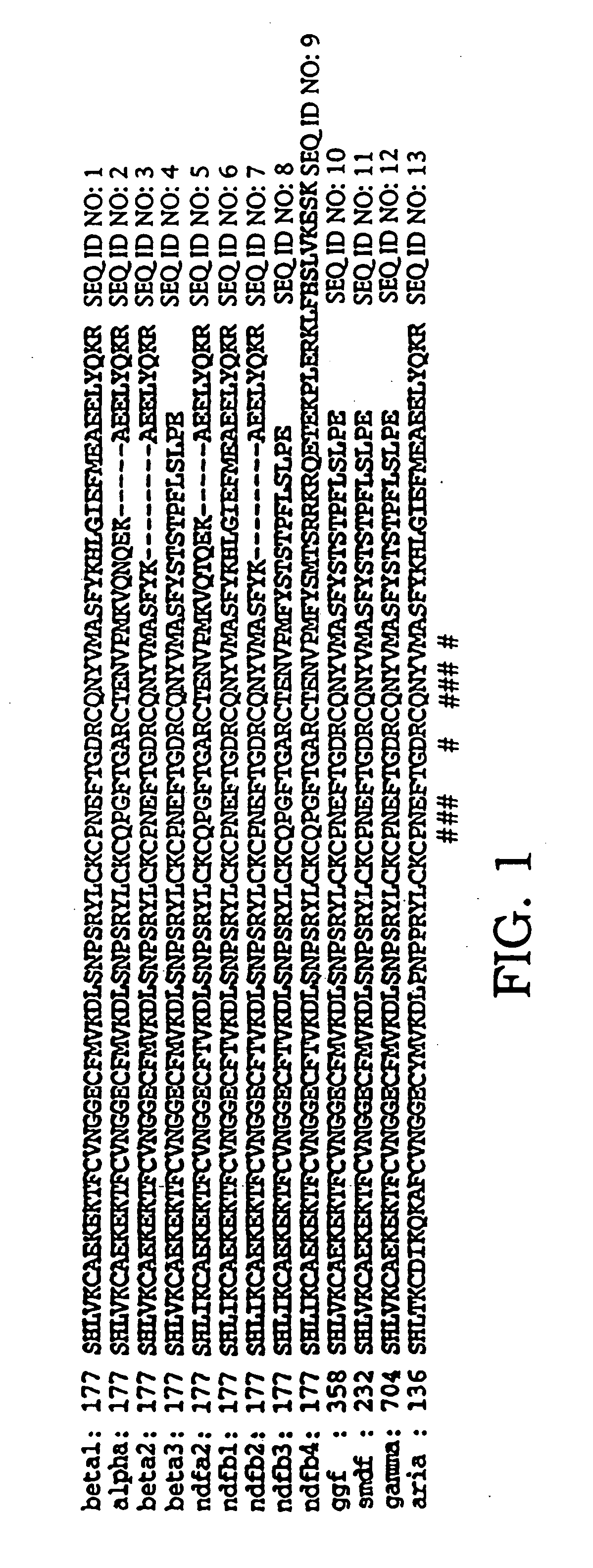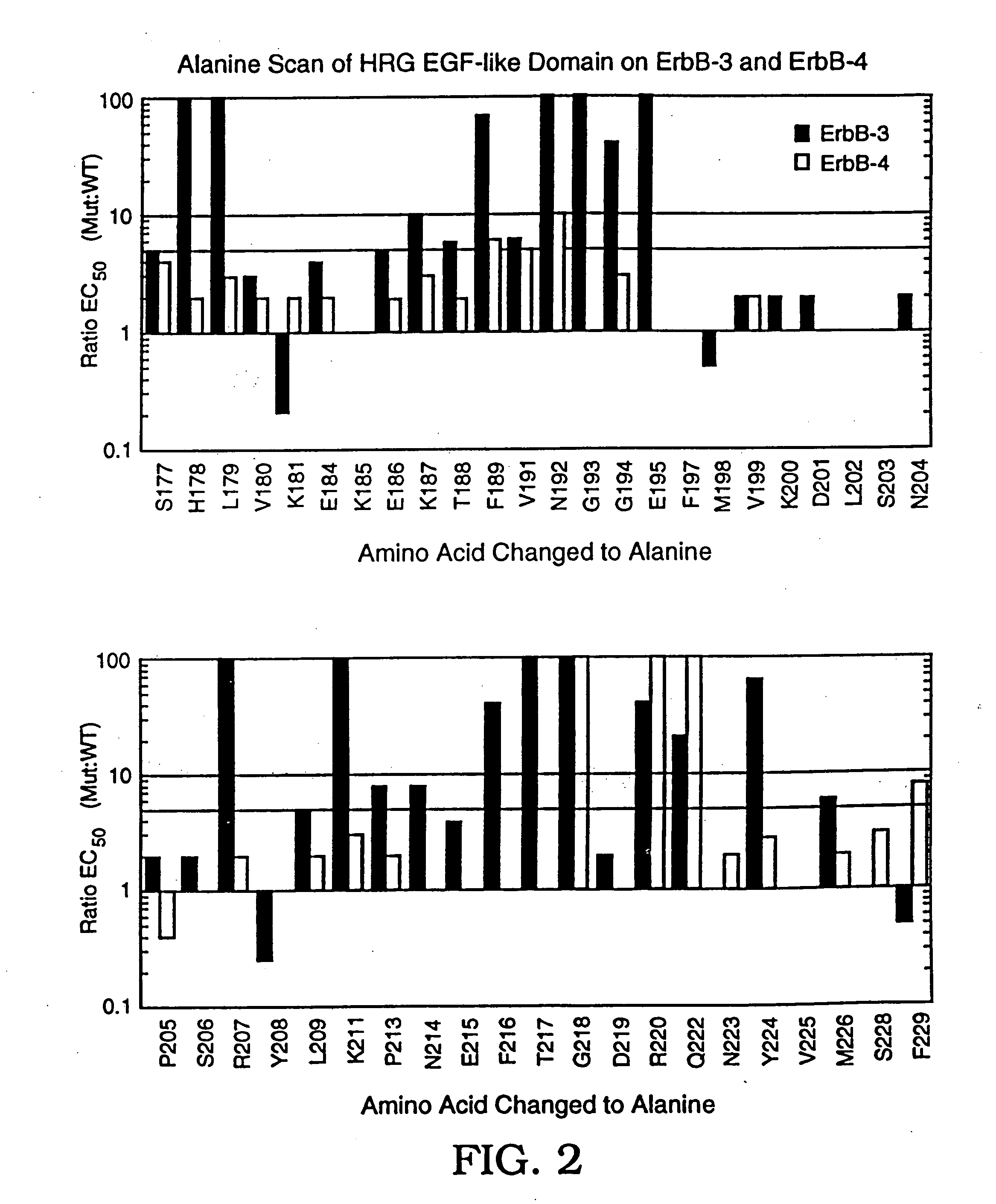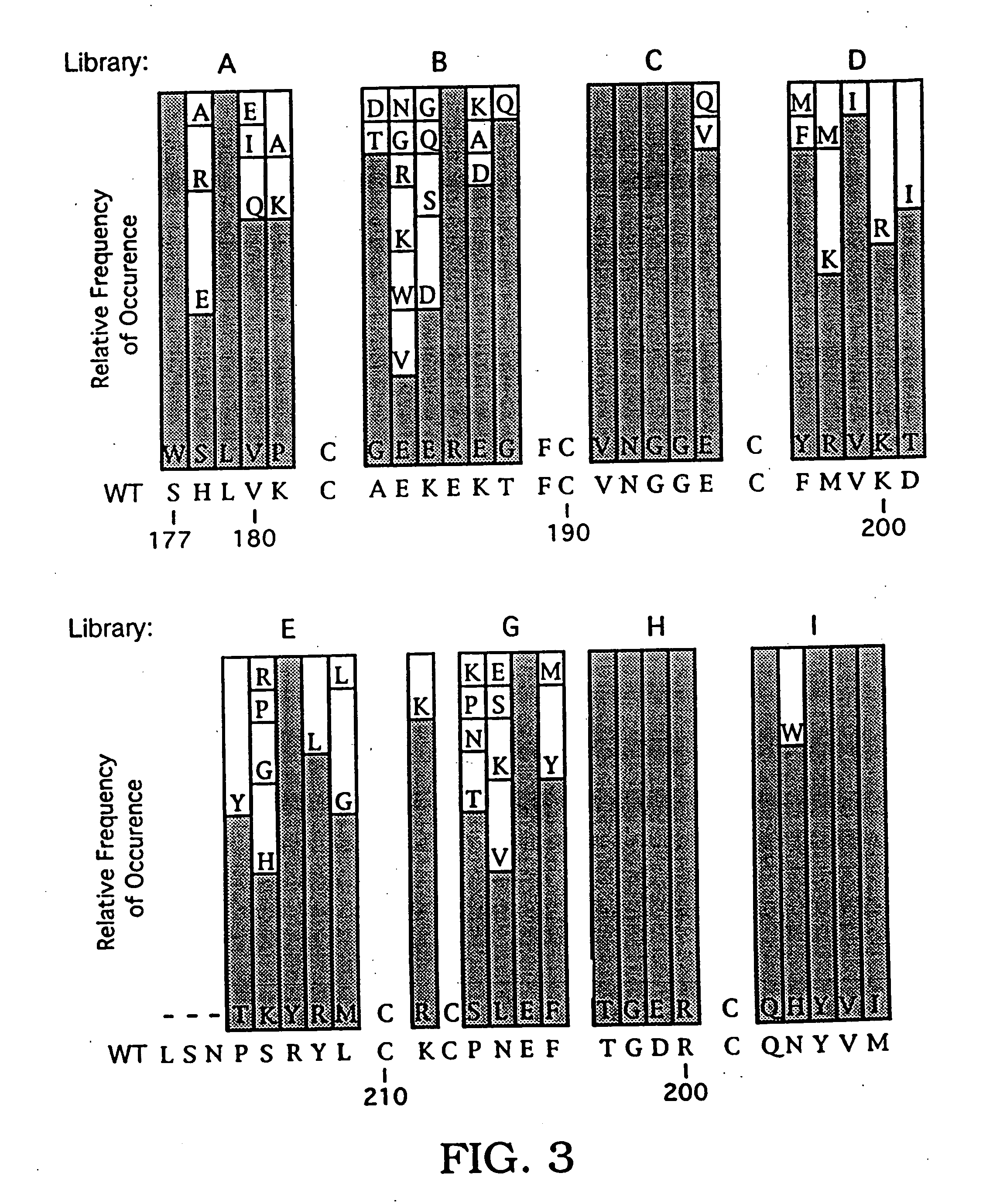Heregulin variants
a variant and heregulin technology, applied in the field of heregulin variants and nucleic acid molecules, can solve the problems of early efforts to select high affinity fusion phages, and achieve the effect of reducing the number of phages and phages
- Summary
- Abstract
- Description
- Claims
- Application Information
AI Technical Summary
Benefits of technology
Problems solved by technology
Method used
Image
Examples
example 1
Determination of the Heregulin-β1 Minimal EGF-Like Domain
[0219] The smallest portion of HRG-β1 EGF that provides high-affinity receptor binding in the context of phage display was determined by preparing phagemid vectors that produced HRG-β1 147-227, 147-244, 177-227, or 177-244 fused to the C-terminus of M13 pIII. These HRG-β1 EGF-like domain fragments were amplified from the vector pHL89 (which is described in Holmes, et al., Science 256: 1205-10 [1992]) by PCR with primers having NsiI / XbaI-containing overhangs.
[0220] These fragments were inserted into the phagemid display vector pam-g3 by restriction digest-ligation at the same sites to generate constructs pHRG1-g3 (177-227), pHRG2-g3 (177-244), pHRG4-g3 (147-227), and pHRG5-g3 (147-244). pam-g3 was a derivative of phGHam-g3, which was designed for phage display of human growth hormone (hGH) and was described in Lowman et al., Biochemistry 30:10832-36 (1991). pam-g3 was produced by removing the hGH gene present in phGHam-g3 and...
example 2
Identification of Active Residues in the Heregulin-β1 EGF Domain by Alanine Scanning
[0235] This example describes the identification of active residues in the heregulin-β1 (HRG-β1) EGF-like domain (HRG-β1 177-229) that play a role in the binding of HRG-β1 to the ErbB-3 and ErbB-4 receptors. Active residues were identified by mutating individual amino acids in this domain to alanine. The mutated domains (hereinafter “variants”) were displayed monovalently on phage as pIII fusion proteins and variant affinities for ErbB-3 and ErbB-4 were determined by phage ELISA. Selected variants were expressed as thioredoxin fusion proteins, which were also assayed for ErbB-3 and ErbB-4 affinity.
Alanine Scanning Mutagenesis and Phage Display
[0236] Alanine-substituted variants were generated by site-directed mutagenesis according to Kunkel et al., Methods Enzymol. 154:367-82 (1987) (hereinafter “Kunkel mutagenesis”), using uracil-containing single-stranded DNA template prepared from pHRG2-g3. pH...
example 3
Selection of Heregulin-β1 EGF Domain Variants Using Monovalent Phage Display
[0245] This example describes the selection HRG-β1 variants containing residues corresponding to the minimal EGF-like domain (HRG-β1 177-228). For these variants, residue numbers also are expressed, in parentheses, in terms of the position of the residue in the minimal EGF-like domain (i.e., HRG-β1 EGF 1-52).
[0246] Variants of HRG-β1 EGF were prepared and selected for binding to ErbB-3-Ig using monovalent phage display, according to the method of Bass et al., Proteins 8:309-14 (1990). As discussed in detail below, an HRG-β1 EGF phagemid vector was prepared, in which HRG-β1 EGF was fused to a C-terminal fragment of the M13 coat protein pIII. Kunkel mutagenesis was performed to introduce stop codons into this vector at sites selected for randomization. This step ensures that the starting vector is incapable of expressing the wild-type polypeptide. Stretches of four to six residues per library were randomized...
PUM
| Property | Measurement | Unit |
|---|---|---|
| dissociation constant | aaaaa | aaaaa |
| Tm | aaaaa | aaaaa |
| Tm | aaaaa | aaaaa |
Abstract
Description
Claims
Application Information
 Login to View More
Login to View More - R&D
- Intellectual Property
- Life Sciences
- Materials
- Tech Scout
- Unparalleled Data Quality
- Higher Quality Content
- 60% Fewer Hallucinations
Browse by: Latest US Patents, China's latest patents, Technical Efficacy Thesaurus, Application Domain, Technology Topic, Popular Technical Reports.
© 2025 PatSnap. All rights reserved.Legal|Privacy policy|Modern Slavery Act Transparency Statement|Sitemap|About US| Contact US: help@patsnap.com



